
A Complete Guide to the 22 Most Common Tomato Pests
Is something wreaking havoc on your tomato plants? It may be pests!
Here are a couple of signs that tomato pests are the culprits:
- Wilting, misshapen, or yellowing leaves
- Chewed or missing leaves
- Holes in the fruits
- Damaged roots
- Malformed or damaged fruits
The most common tomato pests include aphids, flea beetles, spider mites, and leafminers.
Here’s a summary table of what symptoms to look out for and what the culprit might be. Don’t worry, we’ll discuss each pest in more detail later on.
Symptom: Wilting, Misshapen, or Yellowing Leaves
| Tomato Pest | What It Looks Like | What to Do |
| Aphids | Light green or white, with soft, pear-shaped bodies. | Option 1: Treat with neem or horticultural oils (recommended for those who don’t like insecticides). Option 2: Hose them down with water. Option 3: Try companion planting – bring in pollinator-friendly plants, which invite ladybugs that will enjoy getting rid of the aphids for you. |
| Spider mites | Usually red, brown, yellow, or green, depending on the species and season. | Fill up a spray bottle with cold water and mist your plant once or twice a day until the spider mites leave. Don’t forget to prune damaged foliage, too, to eliminate them completely. |
| Thrips | Tiny flying insects that are fairly semi-transparent; usually various shades of yellow, green, gray, or black | Option 1: During early infestations, you can regularly apply contact insecticides as long as the thrips persist. These include insecticidal soaps, horticultural and neem oil, pyrethrins, and azadirachtin. Some gardeners like to mix in piperonyl butoxide for extra measure. Option 2: Grow plants such as coriander, dill, and Queen Ann’s lace, that invite natural predators of thrips, which include ladybugs and predatory mites. |
| Leafhoppers | Grow up to only 0.12 inches long and are a pale green or yellow color with some dark markings | Option 1: If there are just a few, you can blast them away with strong water pressure Option 2: When dealing with larger infestations, you can use horticultural soap, bioallethrin, or bioresmethrin. |
| Stalk Borer | Plump, purple and cream-striped caterpillar with a purple streak running across the tip of its head to its behind | Option 1: If your tomato plant is infested with stalk borers, there’s nothing else you can do but to get rid of the entire plant. You can’t compost any damaged plants as you’ll just give the insect more food to grow. Option 2: As a preventative measure, use good weed control and mulch to prevent any stalk borers from making their way to your tomato plants. |
| Whiteflies | Tiny, soft-bodied insects that are white and have wings | Option 1: Use horticultural oils, insecticidal soaps, or neem oil. Coat all sides of your leaves and observe any changes. Repeat once the oils have dried up and until the whiteflies are completely gone. Option 2: Put yellow sticky traps to catch any whiteflies that go to the bottom half of your tomato plant. However, this method won’t completely eradicate them. |
| Psyllids | Very small, clear-winged insects at only about 0.12 inches long and have a distinctive white band around their segments | Generously spray all your foliage with neem or horticulture oil and repeat in 7-day intervals. To monitor, put up some yellow sticky cards by the top of your tomato plant to catch any remaining psyllids. |
| Squash bugs | They grow to about ½” long. They’re typically brown or dark gray in color, have distinct orange stripes on their bellies, and have a flat back | Option 1: If you’ve caught them early on, you can simply dispose of all the foliage with eggs and adult squash bugs into a bucket of soapy water. Option 2: Completely cover all the infected areas with horticulture or neem oil. |
Symptom: Chewed or Missing Leaves
| Tomato Pest | What It Looks Like | What to Do |
| Hornworm | Red, horn-like structures on heads and yellow spots across sides | Option 1: Treat with neem or horticultural oils (recommended for those who don’t like insecticides). Option 2: Hose them down with water. Option 3: Try companion planting – bring in pollinator-friendly plants, which invite ladybugs that will enjoy getting rid of the aphids for you. |
| Slugs and snails | Soft-bodied (with snails having shells); usually various shades of brown or black | Get rid of them by hand. |
| Flea beetles | Metallic black, bluish gray, or bronze color; distinctly large hind legs | Sprinkle some diatomaceous earth over your plants |
| Blister beetles | Elongated body with relatively thin legs and long horns on their heads; usually varying shades of black with some having a bit of gray or orange | Option 1: If you spot a few in your garden, gently pick them up with gloves and dispose of them in soapy water. Option 2: If there are quite a lot, you’ll need to cover your tomato plants with anchored row covers. Option 3: Bring in birds to eat them. You can make your garden more inviting by adding a bird feeder or water fountain. Option 4: You can apply a biopesticide called Spinosad. Unfortunately, they harm honey bees, which is why you should make this your last resort. |
| Tortoise beetles | Round in shape, resembling turtles with tiny antennas; usually color orange or a pale yellow | Gently pick up the tortoise beetles and relocate them to a place with unwanted weeds. |
| Colorado potato beetle | Distinct for the black stripes against their yellow or orange body | You can pick them up fairly easily by hand and dispose of them in soapy water |
| Leaf miners | Little flies with a noticeable yellow dot on their back | Once you see their distinctive trail of destruction, immediately remove any infected foliage and dispose of them properly. You can spray an organic pesticide called pyrethrin all over the infested foliage. Once the eggs hatch, they’ll eat the poisoned leaves. |
Symptom: Holes in Fruits
| Tomato Pest | What It Looks Like | What to Do |
| Budworms | Brown, red, or greenish with light-colored stripes on the sides of their body and dark stripes on their backs | Option 1: To get rid of eggs and young budworms, you can easily pick them up and dispose of them. You can drown them in soapy water. Option 2: If you’ve got adult budworms, it’s best to use spinosad and certain pyrethroid insecticides. Also, cut off any infested fruits to prevent further spread. |
| Cutworms | Dull gray and green colored; hairless with distinct black spots and light-colored stripes on their back and side | Option 1: Use evening sprays such as spinosad, cyfluthrin, bacillus thuringiensis, or pyrethrin, or diazinon. The best time to do so is when your soil is relatively dry without any expected rainfall. Repeat once every seven days. Ensure to read the instructions of your insecticide properly and follow as prescribed. Option 2: As a preventive measure, till your soil frequently and ensure that there isn’t any debris mixed in. Be careful not to till too deep as this could rupture your tomato plant’s root system. Option 3: You can easily pick them up and drown them in soapy water. Option 4: Since they primarily attack at the base of tomato plants, you can create a fortress using aluminum foils or cups to trap them. |
| Tomato fruit worms | Yellow-white larvae | Option 1: The best way to combat tomato fruit worms is to get rid of the eggs as soon as you spot them. Option 2: If they’re already larvae, you can introduce natural predators such as Hyposoter exiguae wasps, pirate bugs, and big-eyed bugs, among others. |
Symptom: Damaged Roots
| Tomato Pest | What It Looks Like | What to Do |
| Root-knot nematodes | Tiny, white worms | Option 1: If you want to save the soil, the best course of action is to plant large quantities of marigolds. After flowering, bury the marigolds in the soil and allow them to decompose. They emit alpha terthienyl biphenyl compounds, which repel root-knot nematodes. You can also plant marigolds alongside your tomato plants as a repellent against root-knot nematodes. Option 2: Root-knot nematodes take several seasons to become destructive. To prevent this, implement crop rotation practices and add healthy organic matter. |
| Wireworms | Bright orange or yellow hairless worms | Option 1: Till your soil is about 6 to 8 inches deep. Do this regularly, especially when changing out plants. Option 2: Birds are a great way to naturally get rid of worms. You can increase bird visitations by installing a bird bath or feeder. Option 3: Cut a potato in half and submerge it in the infested soil. After a few days, remove the potato and dispose of attached wireworms. |
Symptom: Malformed or Damaged Fruits
| Tomato Pest | What It Looks Like | What to Do |
| Tarnished plant bugs | Black or brown in color and have yellow, red, or orange markings on their bodies. They have slim legs and antennas, too, and only grow to about ¼” long. | Option 1: From early on, install row covers to protect your seedlings from tarnished plant bugs. As your plant matures, adjust these covers accordingly. Option 2: Deter these pests with a garlic spray mixture. To make, use about ¼ pounds (around 3-4 bulbs) of garlic and blend with a quart of water. |
| Stink bugs | Leaf-footed critters that have a distinct long mouth, which allows them to easily pierce through young fruits; often brownish or dark gray in color | Option 1: Invite several of their natural predators to get rid of them for you such as birds and spiders. Option 2: Handpick them from your plant and dump them in a bowl of soapy water. |
Wilting, Misshapen, or Yellowing Leaves

Wilting, misshapen, or yellowing leaves are often a sign of collapsing cells. This means that your tomato plant is dehydrated and lacking nutrients.
A most likely cause would be that there are tiny insects sucking the sap from right beneath the foliage. As a result, your tomato plants don’t have enough nutrition to remain strong and healthy.
If you noticed that you have wilting, misshapen, or yellowing leaves then you’ve probably got an infestation of one or more of the following tomato pests:
1. Aphids
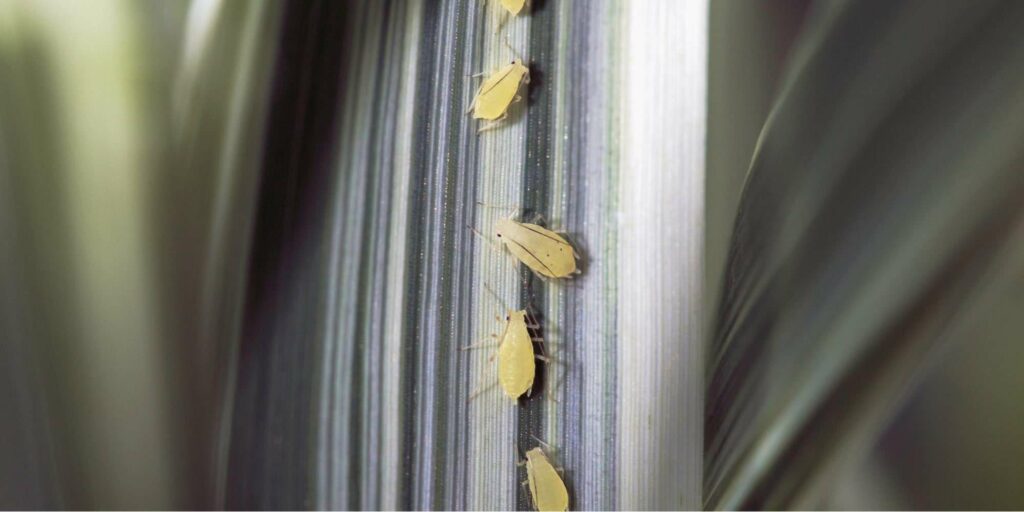
Aphids are incredibly tiny at barely a centimeter long. They’re usually light green or white and have soft, pear-shaped bodies.
Among all the other kinds of pests, aphids are one of the most hated tomato pests because of how destructive they can be.
By sucking the sap out of your plant, they drain it dry of vigor and vitality. So, if your tomato plant is looking a bit limp, you’d best check underneath foliage, especially young leaves, for any trespassers.
To make matters worse, these sap-sucking insects leave a sticky trail, attracting even more pests. They can easily jump between plants, too, which makes them all the more troublesome.
While having just a couple of aphids is harmless, they can multiply quickly as they find power in numbers. Hence, before you know it, you’ve got an infestation of these tomato pests.
What to Do
Option 1: Treat with neem or horticultural oils (recommended for those who don’t like insecticides).
Option 2: Hose them down with water.
Option 3: Try companion planting – bring in pollinator-friendly plants, which invite ladybugs that will enjoy getting rid of the aphids for you.
2. Spider mites
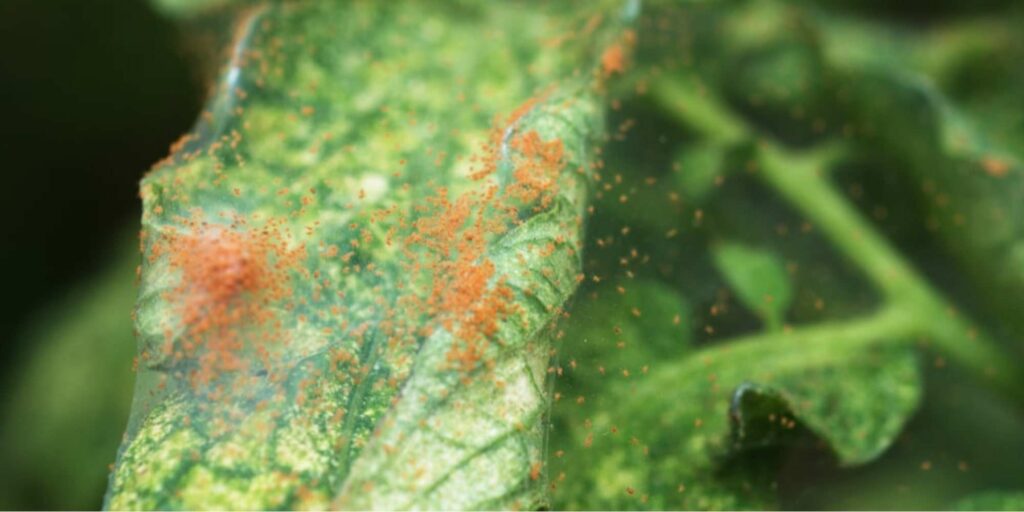
Spider mites are incredibly tiny, making them quite difficult to notice at first glance. They’re usually red, brown, yellow, or green, depending on the species and season.
If you’ve spotted webs around the underside of leaves and along the stems of your tomato plant, then you most likely have spider mites.
These tomato pests feed off the foliage and suck the sap, causing the leaves to turn yellow, red, or gray, and eventually fall off.
To make things worse, they’re tricky to eradicate as they’re resistant to most insecticides. On top of that, they spread quickly, webbing most foliage and killing the plant.
As a result, most gardeners are left with no choice but to remove the entire plant to avoid the further spread of these tomato pests.
What to Do
Fortunately, spider mites do have kryptonite: cold water. Fill up a spray bottle with cold water and mist your plant once or twice a day until the spider mites leave.
Don’t forget to prune damaged foliage, too, to eliminate them completely.
3. Thrips
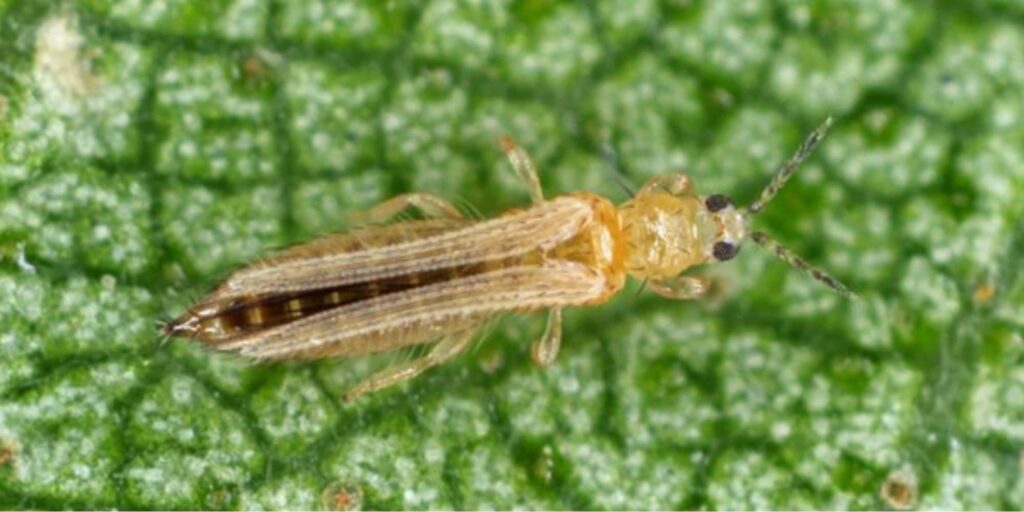
As you can see, thrips are fairly semi-transparent, which makes them difficult to spot if you’re not looking carefully. They’re tiny flying insects that come in various shades of yellow, green, gray, or black.
Aside from being carriers of the spotted wilt virus, they also suck the sap out of your plant’s leaves, flowers, and fruits.
Having said that, most barely notice until they’ve made a big enough impact on your tomato plants. Though, a tell-tale sign that you’ve got an infestation is if there are brown spots on your leaves.
What to Do
Option 1: During early infestations, you can regularly apply contact insecticides as long as the thrips persist. These include insecticidal soaps, horticultural and neem oil, pyrethrins, and azadirachtin.
Some gardeners like to mix in piperonyl butoxide for extra measure.
Option 2: Grow plants such as coriander, dill, and Queen Ann’s lace, that invite natural predators of thrips, which include ladybugs and predatory mites.
4. Leafhoppers
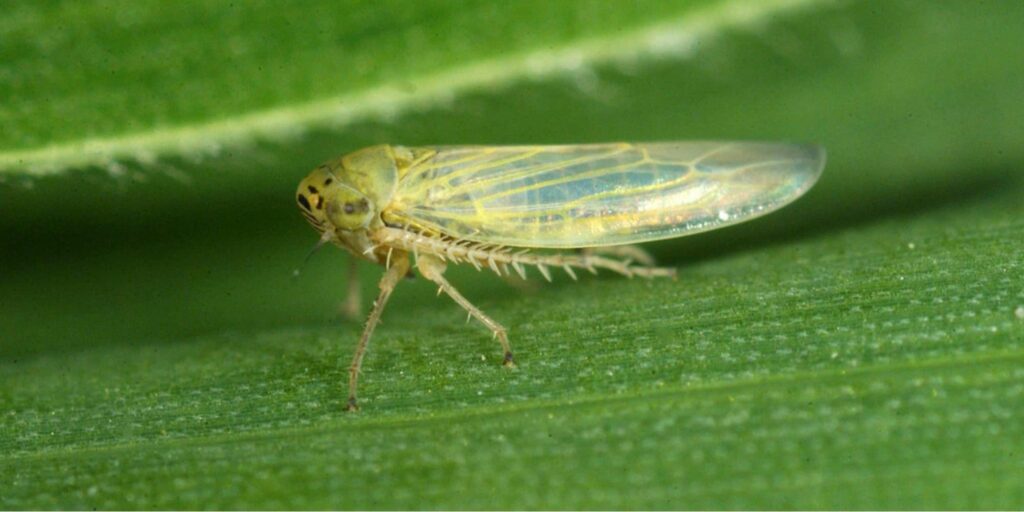
Adult leafhoppers grow up to just 0.12 inches long. Apart from that, they’re a pale green or yellow color with some dark markings, which makes them all the more tricky to spot as they blend in quite easily with foliage.
While leafhoppers may not be the tomato plant’s number one fan, it takes just one to bring in the curly top virus. This will cause a stunt in your plant and leaves to turn yellow.
Other species of leafhoppers suck on the sap of your plant, causing poor nutrient intake and curling leaves.
What to Do
Option 1: If there are just a few, you can blast them away with strong water pressure
Option 2: When dealing with larger infestations, you can use horticultural soap, bioallethrin, or bioresmethrin.
5. Stalk Borer
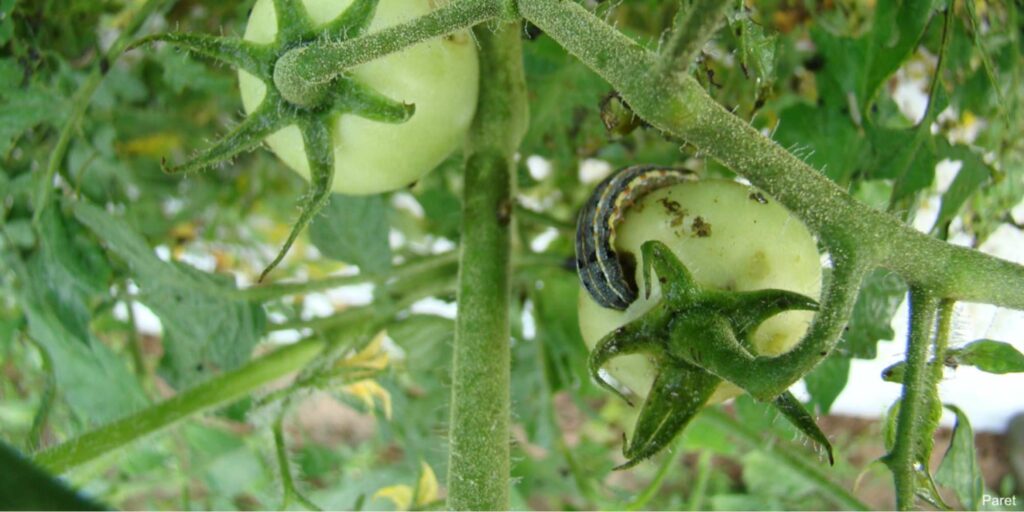
As its name suggests, the stalk borer is a type of caterpillar that bores through the stems of tomato plants (and others).
Since the entrance hole that they make is quite small, it’s difficult for even seasoned gardeners to locate.
Hence, you may not even notice that it’s already been eating your plant from the inside out until it wilts and dies. So, keep an eye out for any decay in your foliage.
Though, it’s pretty easy to spot the stalk borer itself since it’s a plump, purple and cream-striped caterpillar with a purple streak running across the tip of its head to its behind.
What to Do:
Option 1: If your tomato plant is infested with stalk borers, there’s nothing else you can do but to get rid of the entire plant. You can’t compost any damaged plants as you’ll just give the insect more food to grow.
Option 2: As a preventative measure, use good weed control and mulch to prevent any stalk borers from making their way to your tomato plants.
6. Whiteflies
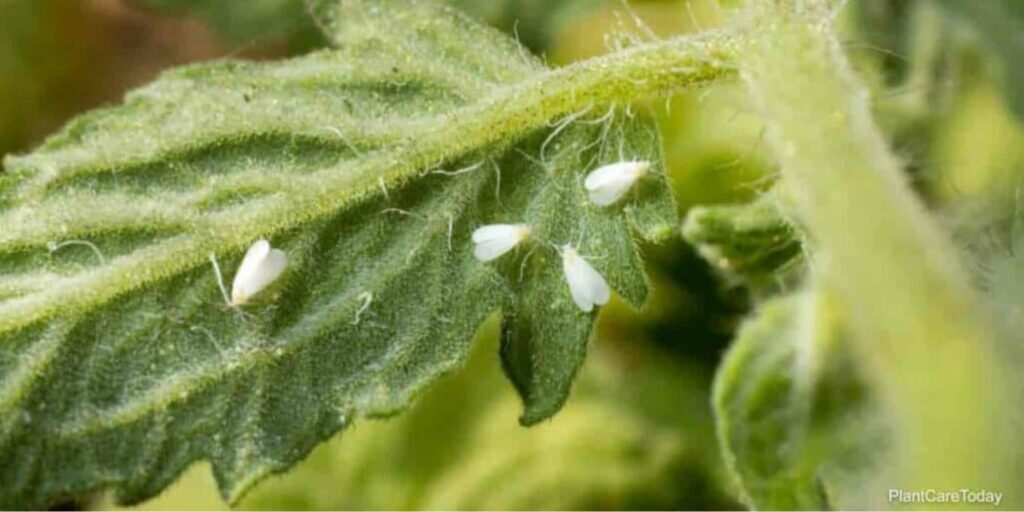
Whiteflies are incredibly similar to aphids. They’re tiny, white sap-sucking critters that are found beneath tomato plant leaves.
They can cause stunted growth, bring diseases, and often leave a sticky residue called ‘honey dew’, which can host sooty mold.
But here’s their biggest difference: whiteflies thrive in indoor environments such as greenhouses.
Just like aphids, they’re pretty much immune to a ton of store-bought insecticides.
What to Do:
Option 1: One of the most effective ways to get rid of whiteflies at all stages is to use horticultural oils, insecticidal soaps, or neem oil. Coat all sides of your leaves and observe any changes.
Repeat once the oils have dried up and until the whiteflies are completely gone.
Option 2: Put yellow sticky traps to catch any whiteflies that go to the bottom half of your tomato plant. However, this method won’t completely eradicate them.
7. Psyllids
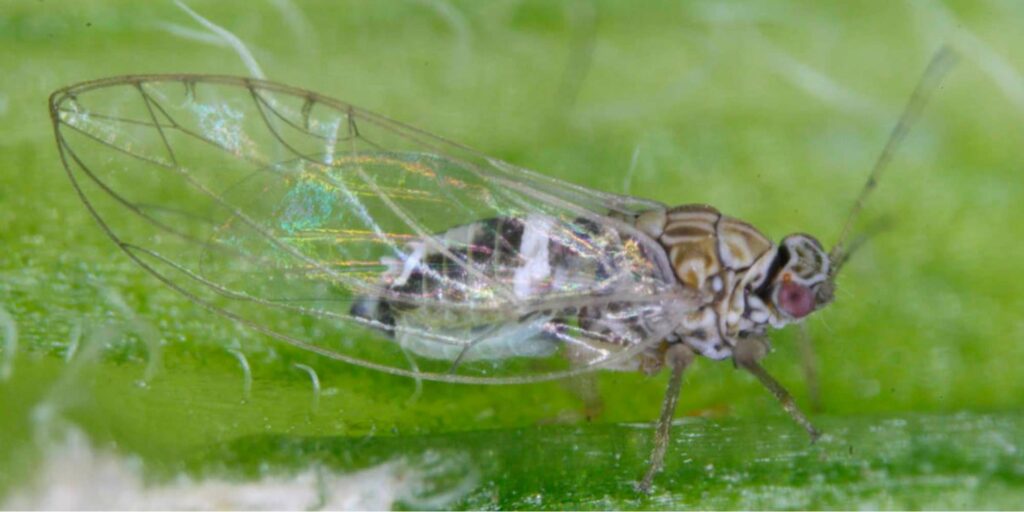
Psyllids are very small, clear-winged insects at only about 0.12 inches long and have a distinctive white band around their segments.
Despite having several hosts, it’s worth highlighting that tomatoes are one of their favorites.
When adults are feeding off of the tomato plant’s foliage, they inject a toxin that results in stunting, curling leaves, and poor production. Meanwhile, the nymphs feed on the underside of the leaves.
What to Do
Generously spray all your foliage with neem or horticulture oil and repeat in 7-day intervals. To monitor, put up some yellow sticky cards by the top of your tomato plant to catch any remaining psyllids.
8. Squash bugs
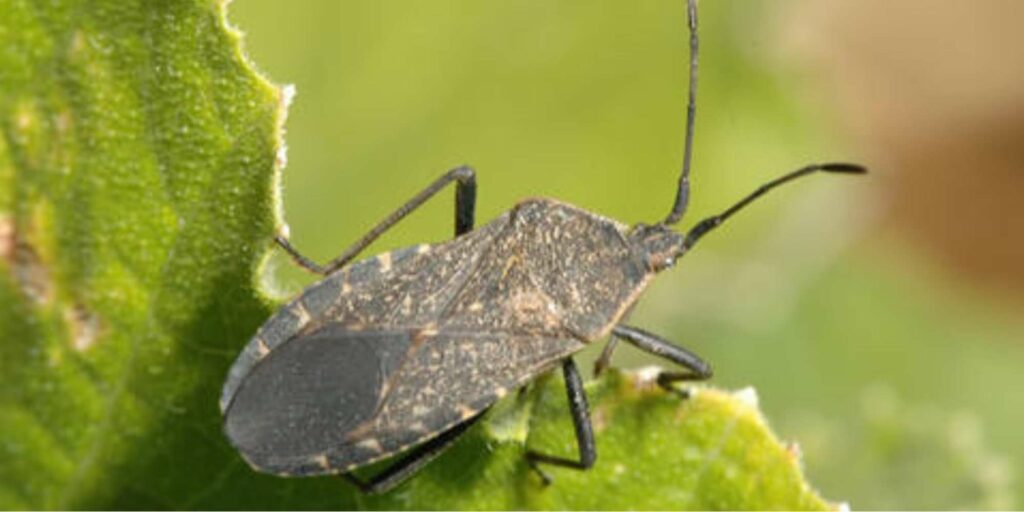
Even though they’re most commonly found among varieties of squash plants, the squash bug is also a notorious pest among tomato plants as they feast on the sap of the foliage.
They grow a tad bigger than most of the critters on this list at about ½” long. They’re typically brown or dark gray in color with distinct orange stripes on their bellies, and a flat back.
Despite having the ability to fly, they often just crawl.
They lay their eggs on the underside of leaves. Luckily, their eggs are pretty easy to spot since they’re pretty big and are brown or orange, which contrasts with the green leaves.
What to Do
Option 1: If you’ve caught them early on, you can simply dispose of all the foliage with eggs and adult squash bugs into a bucket of soapy water.
Option 2: Completely cover all the infected areas with horticulture or neem oil.
Chewed or Missing Leaves
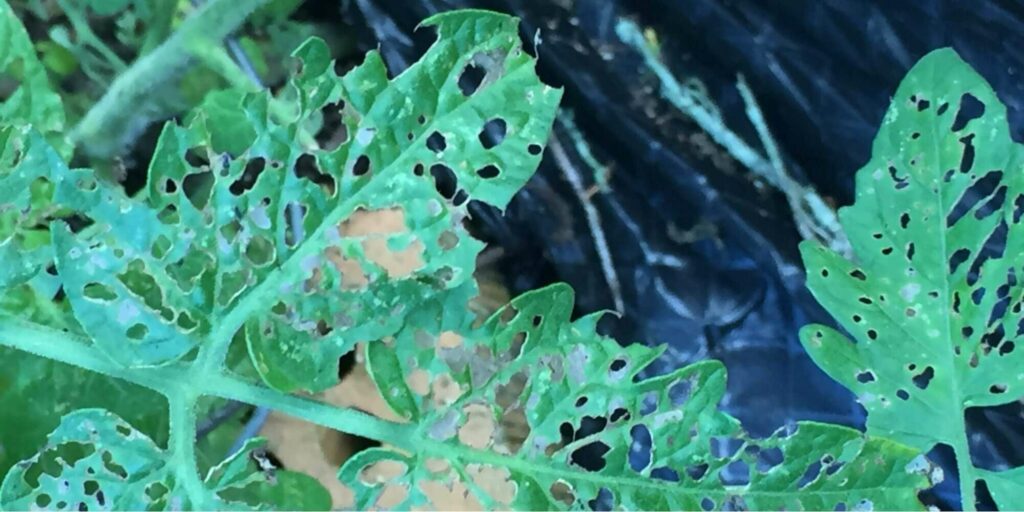
Having chewed or missing leaves is definitely a tell-tale sign that you have a pest that’s absolutely indulging in your tomato plant.
There are a ton of critters that feed off of the plant’s foliage, which disrupt its ability to do photosynthesis.
If you’ve noticed chewed or missing leaves, then you’ve most likely got an infestation of one or more of the following pests:
1. Hornworms

Hornworms are distinct for their red, horn-like structures on their heads and yellow spots across their sides, growing up to about 4 centimeters, at most.
These tomato pests are another harmful insect to watch out for. Don’t be fooled by these adorable little worms since they have a destructive appetite.
A member of the caterpillar species, the hornworm is capable of quickly eating all the leaves of your tomato plant.
On rare occasions, they even go as far as eating the tomato fruit. Though, you’re more likely to see this in larger infestations.
Due to their light green color, they blend easily among the foliage, which makes them hard to spot at first. However, if you see tiny bite marks on your leaves, that’s probably the only clue you’ll need.
What to Do
Since they’re slow-moving, you can easily get rid of them by hand. If you’re squeamish, we recommend using gloves since they’re soft and squishy.
2. Slugs and snails
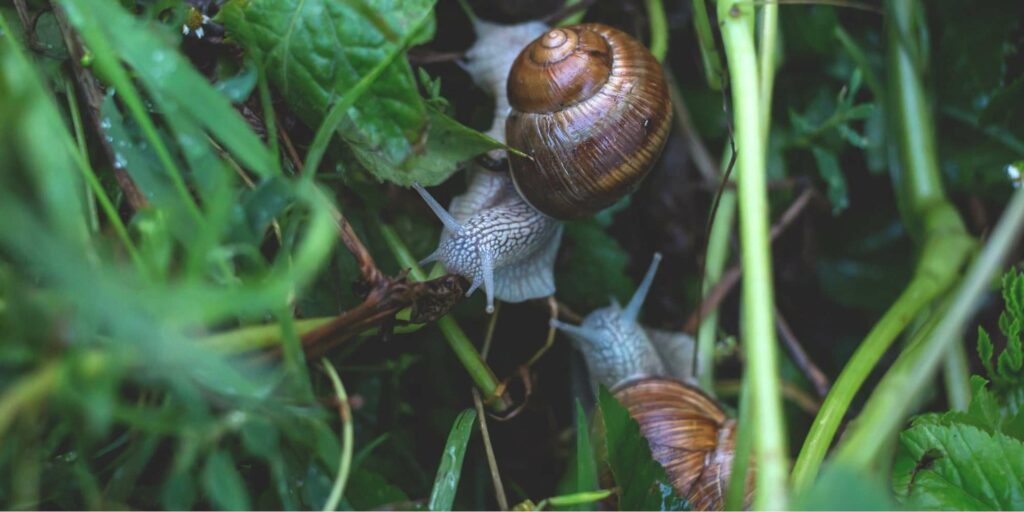
Slugs are shell-less mollusks, while snails have shells. Both are soft-bodied and are usually various shades of brown or black.
Like the hornworm, a few slugs and snails are seemingly harmless as they play a vital role in our ecosystem. However, they’re also quite hungry grubs that can wreak havoc on your garden in large populations.
So, it’s best to keep their numbers under control. But here’s the hitch: these tomato pests are mostly active at night, which makes them quite hard to get rid of.
What to Do
Option 1: Pick them up and get rid of them manually (for manageable quantities).
Option 2: For larger populations, set a beer trap – dig a hole in the ground and put a bowl filled with beer inside, ensuring it’s at soil level.
The yeast in beer attracts these tomato pests, so once they get in, they’ll eventually drown.
Option 3: Preventive measures – invite natural predators that’ll eradicate them for you, such as birds and frogs.
It’s important to highlight that slugs and snails love moist environments. So, practice watering your garden in the morning, so that by nightfall, it’s dry.
3. Flea beetles
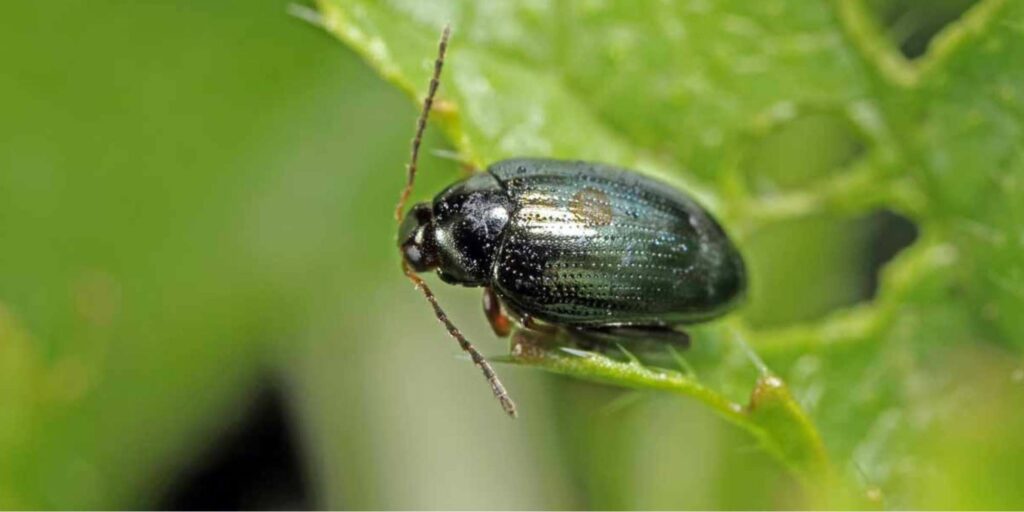
Another tomato pest is the flea beetle. Despite growing to only one-tenth of an inch, these microscopic terrors wreak absolute havoc on tomato plants.
Flea beetles are often a metallic black, bluish gray, or bronze color. They’re distinct for their large hind legs, which help them jump around quickly.
The adults drill holes in leaves while the larvae feed on underground parts such as the roots. But here’s the kicker: they carry a ton of diseases that are harmful to your plant’s health, especially young ones.
What to Do
One of the most effective, non-toxic ways to combat the spread is to sprinkle some diatomaceous earth over your plants. Aside from flea beetles, this is a great way to get rid of any other tomato pests lurking in your garden.
4. Blister beetles

While there are many types of species of blister beetles, they all have similar body structures – elongated bodies with relatively thin legs and long horns on their heads.
They’re mostly varying shades of black with some having a bit of gray or orange.
Unique about the blister beetle is that aside from causing damage to tomato plants, it can also cause harm to people.
They’re known to have enormous appetites and can completely defoliate your plants, leaving them for dead.
Blister beetles, when threatened, injured, or crushed, release cantharidin, an odorless and colorless toxin. When in contact with the skin, cantharidin causes extreme irritation and even blisters.
To make matters worse, they often travel in swarms. So, you have to be careful when handling them.
What to Do
Option 1: If you spot a few in your garden, gently pick them up with gloves and dispose of them in soapy water.
Option 2: If there are quite a lot, you’ll need to cover your tomato plants with anchored row covers.
Option 3: Bring in birds to eat them. You can make your garden more inviting by adding a bird feeder or water fountain.
Option 4: If you’re at your wit’s end, you can apply a biopesticide called Spinosad. Unfortunately, they harm honey bees, which is why you should make this your last resort.
5. Tortoise Beetles
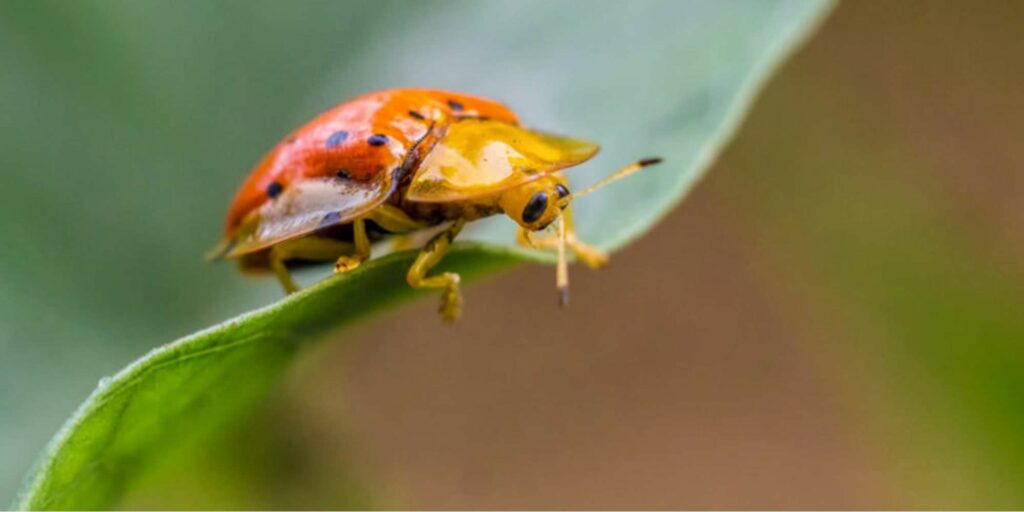
Tortoise beetles are undeniably cool-looking insects since they’re pretty cool to look at, often round in shape resembling turtles with tiny antennas, and are colored orange or a pale yellow.
In small quantities, they’re actually pretty beneficial to your garden’s ecosystem. They eat several types of weeds that are a pain to get rid of such as musk thistle and horsenettle.
However, in large numbers, they can do a lot of damage to the foliage of your tomato plants, leaving a ton of holes in their wake.
Though, since these are typically only visual problems, having tortoise beetles shouldn’t be too big of a concern.
What to Do
Since they’re beneficial critters to have, gently pick up the tortoise beetles and relocate them to a place with unwanted weeds.
6. Colorado Potato Beetle
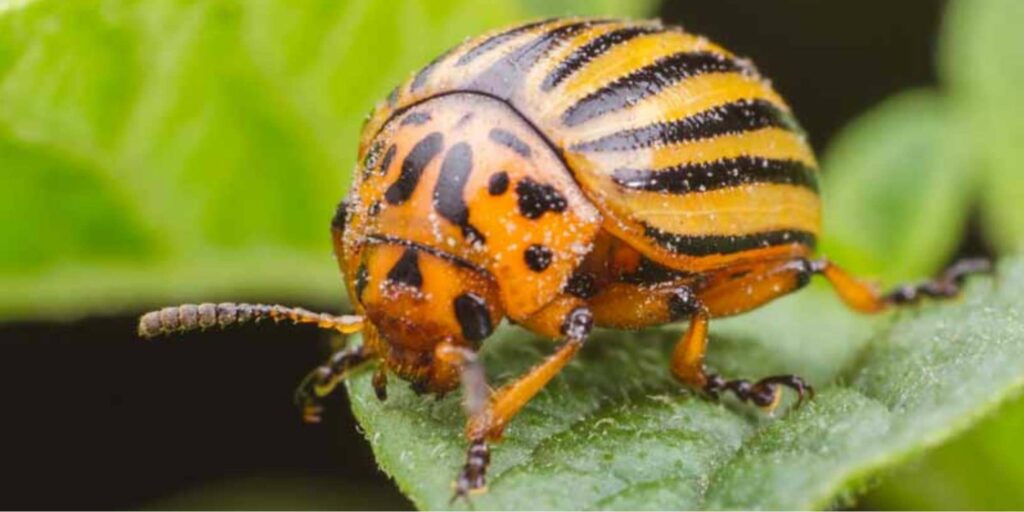
At first glance, the colorado potato beetle resembles a ladybug. However, upon closer inspection, you’ll notice the distinct black stripes against their yellow or orange body.
While they leave your tomato plants leafless just like a caterpillar, they do so in a particular way. Unlike caterpillars who eat everything, the colorado potato beetle leaves the veins and petioles behind.
If your plant has lost just around 30% to 50% of its foliage, we’re sure it’ll make it.
What to Do
You can pick them up fairly easily by hand and dispose of them in soapy water.
7. Leaf miners
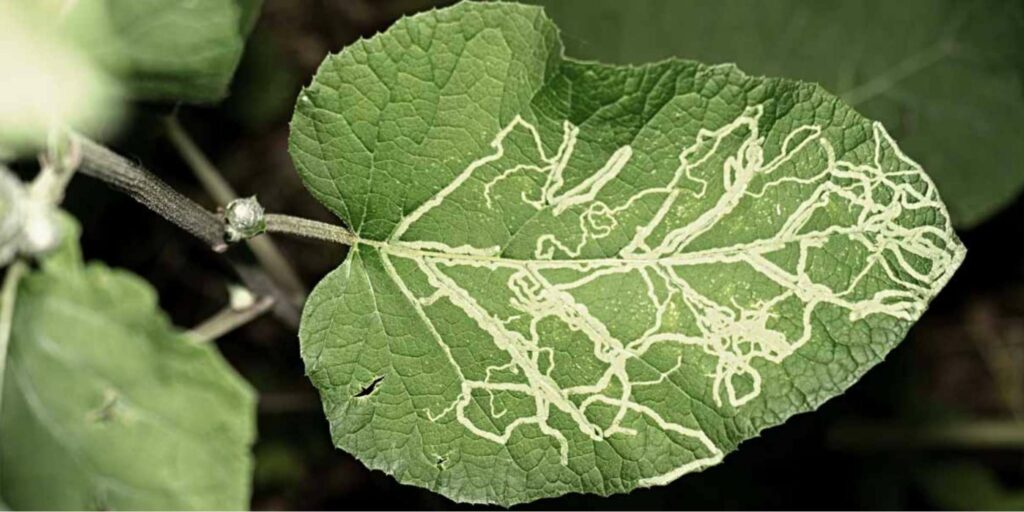
Most gardeners have seen their fair share of leaf miners, especially during spring and summer. They’re little flies with a noticeable yellow dot on their back.
The females lay their eggs underneath the foliage. When they hatch, the larvae eat their way through the leaves, which results in a distinctive white trail that makes them easy to spot.
What to Do
Once you see their distinctive trail of destruction, immediately remove any infected foliage and dispose of them properly.
You can spray an organic pesticide called pyrethrin all over the infested foliage. Once the eggs hatch, they’ll eat the poisoned leaves.
Holes in Fruits
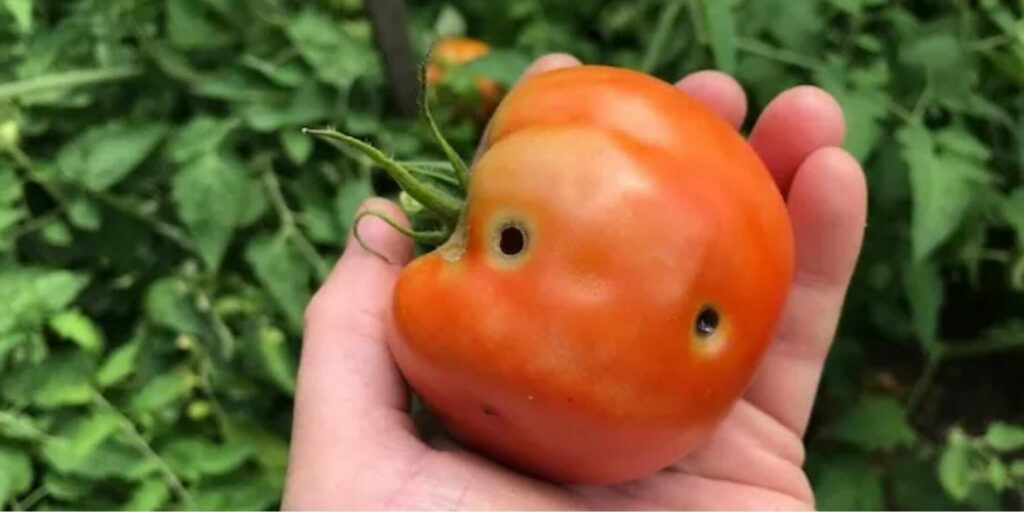
When you see holes in your fruits, it’s an indicator that something has gotten inside and is feasting away.
More often than not, it’s a pest that belongs to the worm or caterpillar species. Having said that, it could be any of the following:
1. Budworms
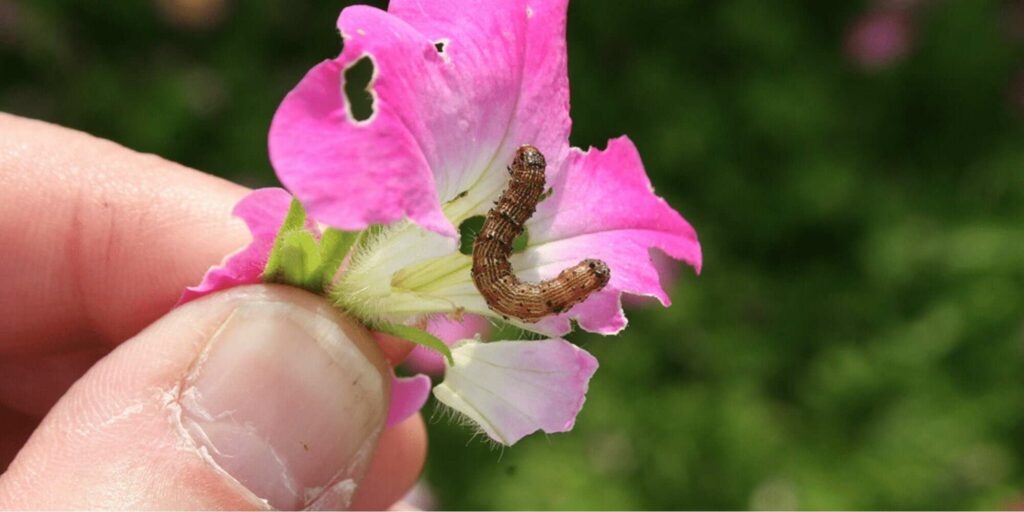
A member of the caterpillar family, while the budworm looks soft and squishy, these critters are actually thick-skinned. They’re often brown, red, or greenish in color.
They’re quite small, only growing up to around 44mm long. Their most distinctive features are their light-colored stripes on the sides of their body and dark stripes on their backs.
If your plant already has growing tomatoes, they’ll be more susceptible to attacks as budworms feed on the fruits.
Since they’re most common in the summer, it’s best to tackle an infestation as soon as you see them. Their eggs are small and white, and often laid on plants.
What to Do
Option 1: To get rid of eggs and young budworms, you can easily pick them up and dispose of them. You can drown them in soapy water.
Option 2: If you’ve got adult budworms, it’s best to use spinosad and certain pyrethroid insecticides.
Also, cut off any infested fruits to prevent further spread.
2. Cutworms
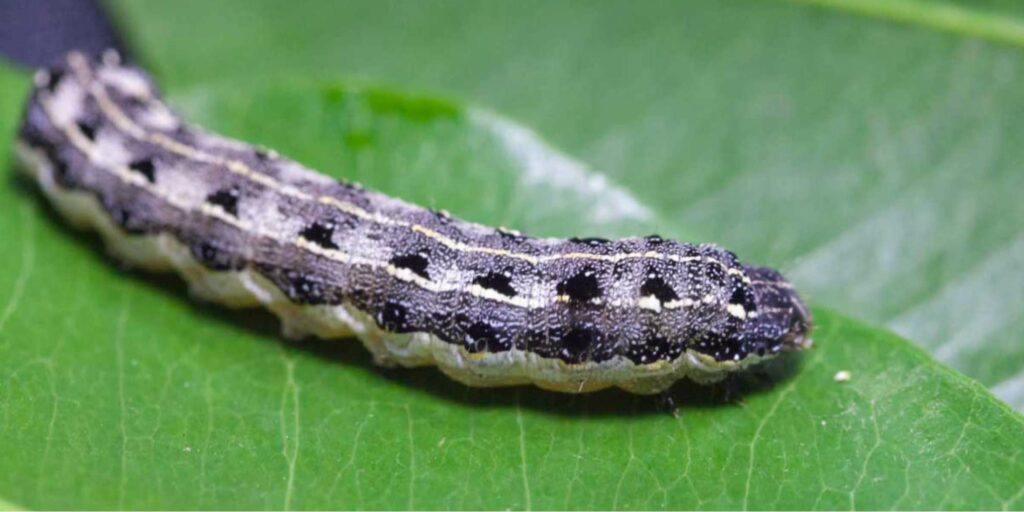
A unique trait of cutworms is that they’re soil-dwelling caterpillars. So, they’re primarily dormant during the day and strike at night, which makes them a tad trickier to spot.
To make things worse, they’re a dull brown and green color. So, these stealthy creatures can easily camouflage with the ground and foliage.
However, when they’re fully grown, they don’t go over 2 inches long. They’re also soft-bodied critters and curl up when touched.
In comparison to their other caterpillar siblings, the cutworm is hairless and has distinct black spots and light-colored stripes on its back and sides.
They do a ton of damage to both seedlings and adult tomato plants. Aside from eating the fruit, they also ravage the stems, causing the plant to fall down.
What to Do
Option 1: Use evening sprays such as spinosad, cyfluthrin, bacillus thuringiensis, pyrethrin, or diazinon. The best time to do so is when your soil is relatively dry without any expected rainfall.
Repeat once every seven days. Ensure to read the instructions of your insecticide properly and follow them as prescribed.
Option 2: As a preventive measure, till your soil frequently and ensure that there isn’t any debris mixed in. Be careful not to till too deep as this could rupture your tomato plant’s root system.
Option 3: You can easily pick them up and drown them in soapy water.
Option 4: Since they primarily attack at the base of tomato plants, you can create a fortress using aluminum foils or cups to trap them.
3. Tomato fruit worms
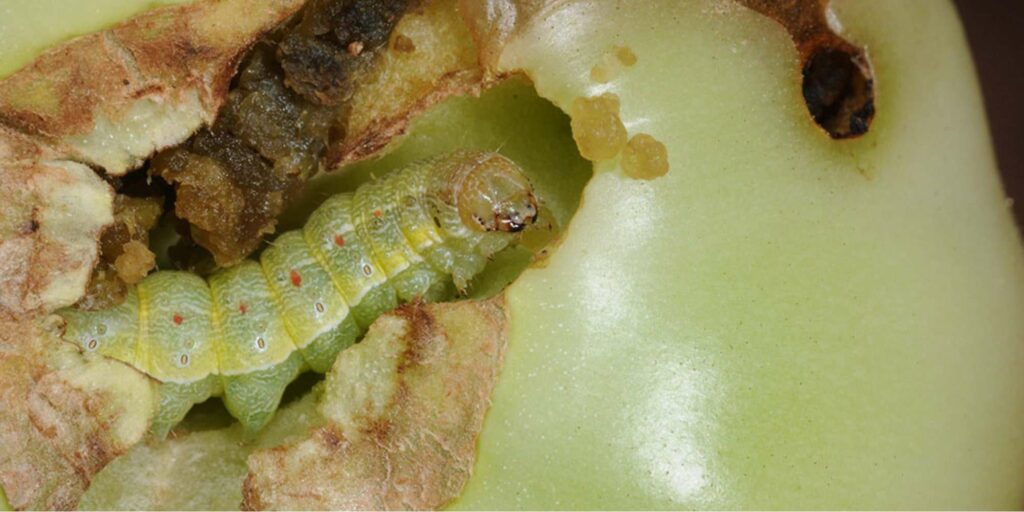
Also referred to as the corn earworms, they’re actually the yellow-white larvae of adult moths. Moths lay their eggs in the tomato plant and when they hatch, they’re ready to devour the juicy tomato in front of them.
The reason they’re easily missed is because they do damage from the inside out. Hence, your tomato fruit may be looking just fine on the outside but could be facing a different reality on the inside.
What to Do:
Option 1: The best way to combat tomato fruit worms is to get rid of the eggs as soon as you spot them.
Option 2: If they’re already larvae, you can introduce natural predators such as Hyposoter exiguae wasps, pirate bugs, and big-eyed bugs, among others.
Damaged Roots
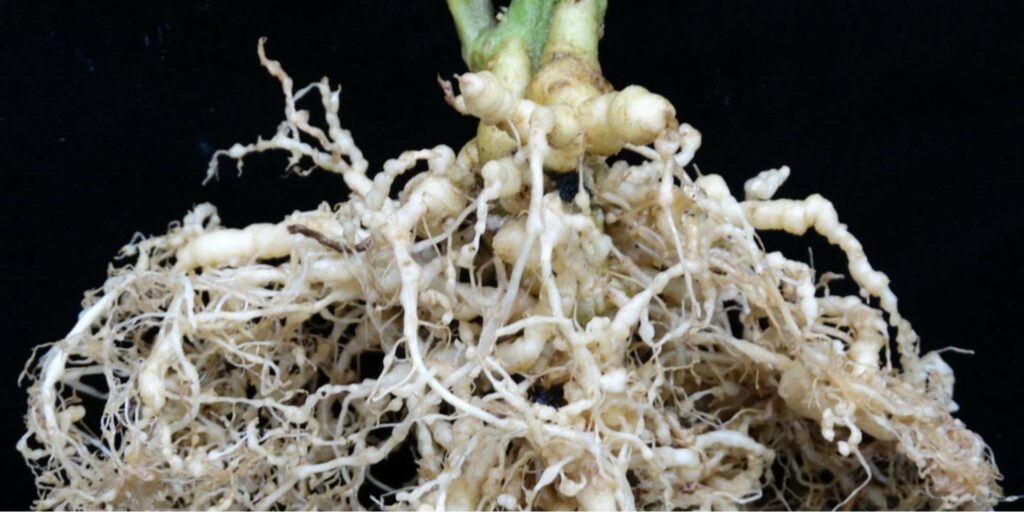
If you don’t spot any bugs on your tomato plant then it may be possible that the culprit is underground. There are a few pests that can cause damage to your tomato plant’s roots.
If this happens, it’s quite unfortunate that it’s unlikely you’ll be able to save your plant. Apart from that, you also won’t be able to reuse your soil either, especially if you have a severe infestation on your hands.
Here are a couple of pests that you should watch out for if you think you’ve got damaged roots:
1. Root-knot nematodes
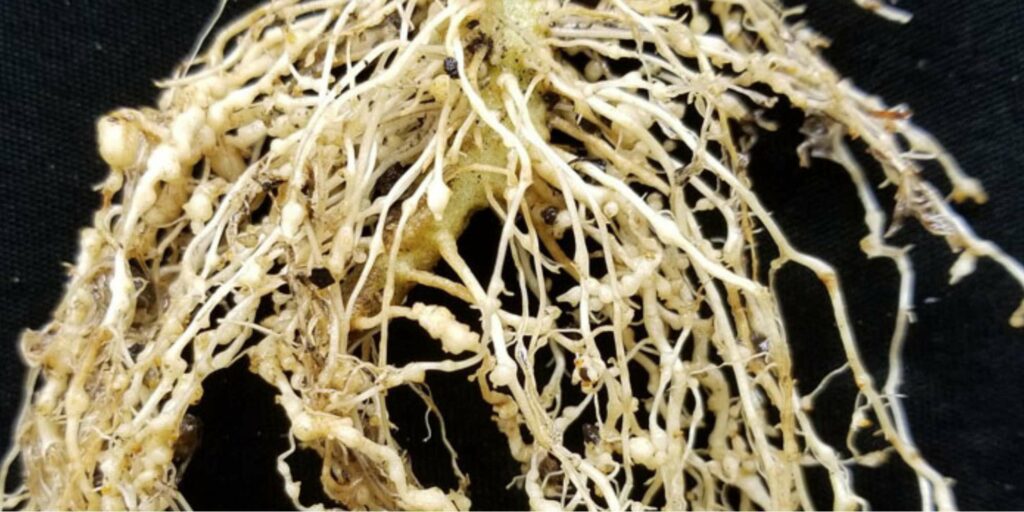
If you’ve noticed yellowing or discolored foliage, wilting, or even stunting in your tomato plants, but don’t notice any bugs, then you’ve probably got root-knot nematodes.
While several kinds of nematodes are gardeners’ friends and are even used to manage pests, root-knot nematodes are the opposite.
They’re tiny, white worms that cause your tomato roots to swell. What’s worse is they even create knob-like growths, which prevent your tomato plant from getting the nutrients that it needs.
Since they work in the soil, root-knot nematodes spread easily, especially in open and large beds. So, you’re left with no choice but to dispose of all the infected soil and plants.
It’s important to highlight that you cannot reuse this soil or compost it because the root-knot nematodes will continue to spread.
What to Do
Option 1: If you want to save the soil, the best course of action is to plant large quantities of marigolds. After flowering, bury the marigolds in the soil and allow them to decompose.
They emit alpha terthienyl bithenyl compounds, which repel root-knot nematodes.
You can also plant marigolds alongside your tomato plants as a repellent against root-knot nematodes.
Option 2: Root-knot nematodes take several seasons to become destructive. To prevent this, implement crop rotation practices and add healthy organic matter.
2. Wireworms
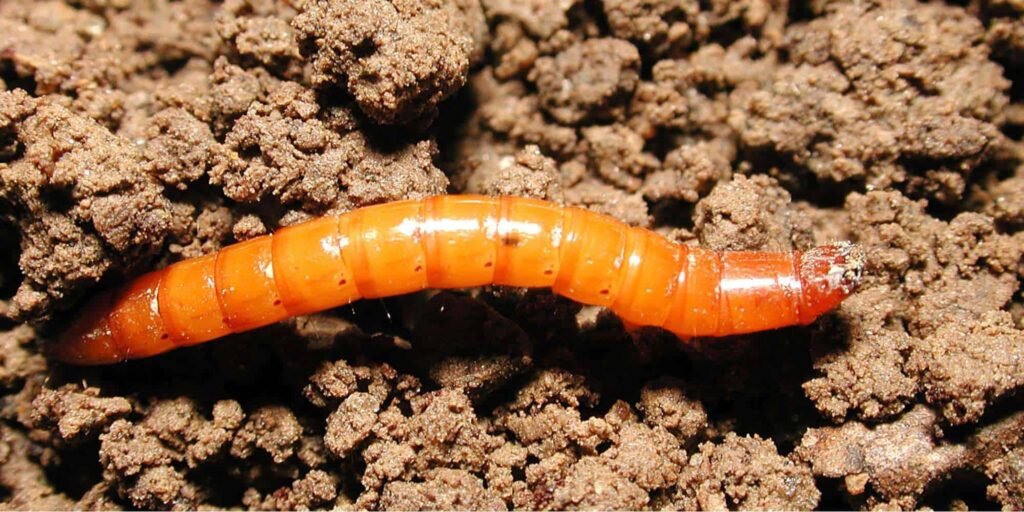
It’s pretty easy to spot wireworms given their bright orange or yellow color. They’re the larval stage of click beetles, which means they’ve got an enormous appetite to satisfy before reaching adulthood despite how tiny they actually are.
Having said that, they’re notorious for wreaking havoc on germinating seeds and roots. On top of that, some of them even burrow themselves inside stems.
What to Do
Option 1: Wireworms are typically found in soil that has been left uncultivated for a long time, which is the ideal environment for these eggs to grow.
So, it’s best to till your soil about 6 to 8 inches deep. Do this regularly, especially when changing out plants to prevent another set of eggs from being laid there.
Option 2: As seen in several cartoons, birds are a great way to naturally get rid of worms. You can increase bird visitations by installing a bird bath or feeder.
Option 3: Potato traps are another common way to quickly get rid of wireworms. Cut a potato in half and submerge it in the infested soil.
After a few days, remove the potato and dispose of the attached wireworms.
Malformed or Damaged Fruits

Malformed or damaged fruits are another tell-tale sign that there are unwanted visitors in your lovely garden.
Sadly, it’s sometimes harder to spot pests that have tiny and sharp mouths that don’t cause too much bruising on the outside until it’s too late.
Once you’ve spotted your tomato fruits looking like they just got a beating, check to see if you’ve got any of these critters in your midst:
Tarnished plant bugs
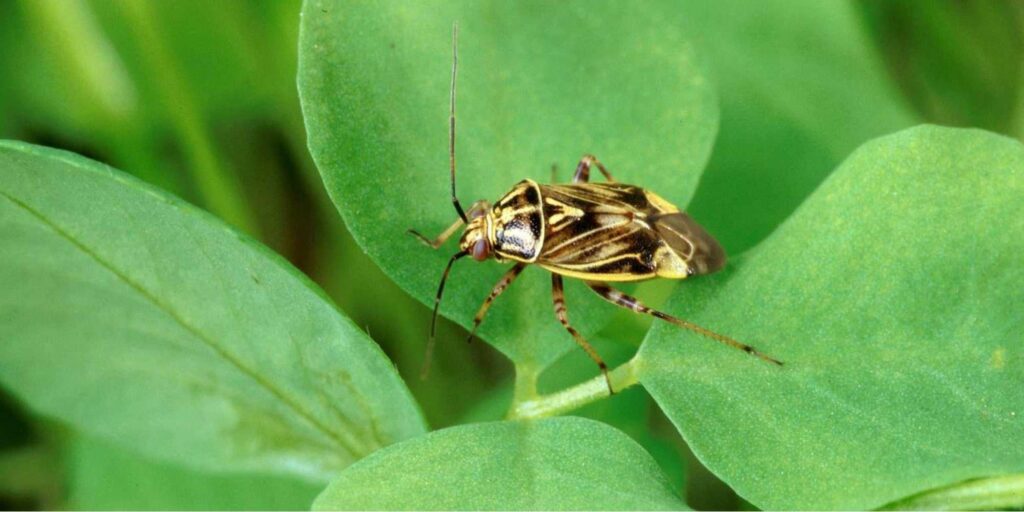
Tarnished plant bugs are often black or brown in color and have yellow, red, or orange markings on their bodies. They have slim legs and antennas, too, and only grow to about ¼” long.
Just like many other pests on this list, the tarnished plant bugs suck the sap out of your tomato fruits with their mouth, leaving them limp and their fruits distorted.
Here’s the thing: while they love tomatoes, they aren’t shy to travel to other nearby fruits and veggies. Hence, they’re quite troublesome to have in your garden.
However, their damage is quite distinct which means it’s often a dead giveaway that you’ve got tarnished plant bugs.
On the leaves and stems of your tomato plants, they’ll leave black spots and cloudy spots on the fruits. But the worst of all, they cause catfacing, which is scarring by the blossom end.
What to Do
Option 1: From early on, install row covers to protect your seedlings from tarnished plant bugs. As your plant matures, adjust these covers accordingly.
Option 2: Deter these pests with a garlic spray mixture. To make, use about ¼ pounds (around 3-4 bulbs) of garlic and blend with a quart of water.
Stink bugs
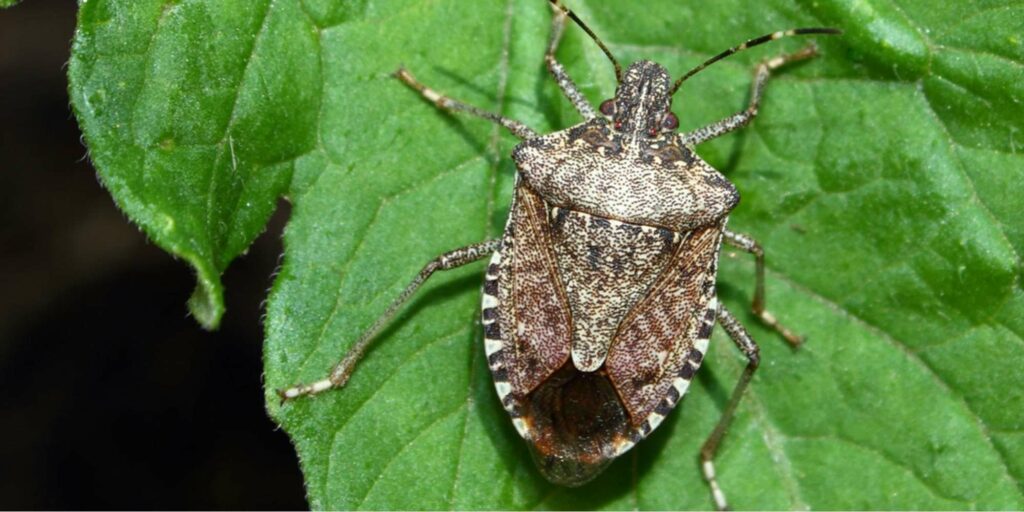
Stink bugs are leaf-footed critters that have a distinct long mouth which allows them to easily pierce through young fruits. They’re often brownish or dark gray in color.
While stink bugs don’t care much for foliage, they do love young tomato fruits. So, you may find a couple happily feasting on your immature fruits.
Apart from that, they carry a handful of diseases that they could transfer to your tomato plant.
Option 1: Invite several of their natural predators to get rid of them for you such as birds and spiders.
Option 2: Handpick them from your plant and dump them in a bowl of soapy water.
FAQs on tomato pests
A couple of beneficial plants that you can grow alongside your tomatoes are:
⮕Marigold
⮕Basil
⮕Garlic
⮕Parsley
⮕Beans
⮕Chives
⮕Borage
⮕Mint
⮕Onion
Apart from attracting pollinators, these plants can also bring in natural predators that will hunt down your garden pests for you.
Spraying your tomato plants with soapy water can get rid of several pests such as aphids, spider mites, flea beetles, and thrips, among others.
To make, mix 2 ½ tablespoons of pure-castile liquid soap with a gallon of water. Transfer to a sprayer and shake well before using.
When it comes to the frequency of your sprays, don’t overdo them. Spray weekly for 4 weeks or until you see improvements.
Using diluted vinegar on your tomato plant can help with an array of fungal diseases and some nasty pests, too.
To make, mix 2-3 tablespoons of white vinegar with a gallon of water. Avoid using vinegar directly as this could burn your plans, so it’s important to dilute it.
When using, ensure that you get every infected nook and cranny there is. This includes the top and bottom of the foliage, which are where fungi and pests love to hide.
As for the frequency of your sprays, do it once every 7 days.
Sprinkling baking soda on tomato plants is a popular trick to prevent fungi from growing, especially in humid environments.
Apart from that, it can help lower your soil’s pH levels, too. This is great if your acidity levels are off, helping to make the fruits sweeter.
To use, evenly sprinkle ¼ cup of baking soda on the soil. Repeat every 7 to 14 days for the best results.
Epsom salt (row 8) is rich in magnesium, which makes it a great addition to your gardening routine if your tomato plant is experiencing magnesium deficiency.
A couple of ways that you can protect tomatoes from pests are:
⮕Having companion plants that are natural deterrents and can attract predators that ward off pests
⮕Use tomato cages (row 6) to keep your plant upright and away from the ground
⮕Install bird netting to keep larger pests away
The most damaging pest of the tomato plant is the tomato fruit worm. This is because the adults lay their eggs inside the plant, which gardeners don’t notice until it’s too late.
Once the eggs hatch, the larvae begin eating the tomato fruit straight away, causing damage from the inside out. Unfortunately, the tomato fruit will become unsalvagable at this point.
What other tomato pests have plagued your plants? Let us know in the comments below, and share your best tips on how to get rid of them!




